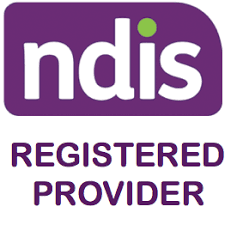Apps
Definition of Anxiety Disorder
Anxiety disorder is one of the most common mental disorders that involves excessive fear and is associated with muscle tension and avoidance behaviour. The Diagnostic and Statistical Manual of Mental Disorders 5th edition (DSM-V) (American Psychiatric Association, 2013), is a handbook that is used by professionals around the world to diagnose mental disorders.
Anxiety is closely linked to Pathological Demand Avoidance.
The DSM–V states that anxiety becomes disordered when the fear and the worry is out of proportion to the situation at hand. The overestimation of the danger in the situation and the fear of being embarrassed, humiliated, or failing is so great that anxiety symptoms become more intense, persistent and chronic. Also, the anxiety is beyond that which would be expected for the individual’s developmental level and interferes with social, academic, occupation or other areas of functioning (American Psychiatric Association, 2013).
All of us experience some degree of anxiety (i.e. fear and worry) from time to time. When faced with a stressful situation (e.g. first day of school, attending a job interview or preparing for an exam), it is expected, normal and useful to experience a little bit of anxiety. Anxiety increases our alertness, energy and focus, which improves our performance. Anxiety experienced within the normal range is short lived and we return to a calm state when the stressful situation is over.
For help with managing anxiety, read the blog 'Strategies for Managing Anxiety'.
Types of Anxiety Disorder
Below are some of the common types of Anxiety Disorders with a brief definition of each:
- Separation anxiety disorder: excessive fear and worry about anticipated or actual separation from caregiver(s).
- Selective mutism: excessive fear or anxiety resulting in an inability to speak in some social situations, despite being able to speak in other situations.
- Specific phobia: excessive, irrational fear or anxiety about or avoidance of facing a specific object, or situation.
- Social anxiety disorder: excessive fear or anxiety about or avoidance of social or performance situations that involve the possibility of negative judgements and evaluation by others which may result in embarrassment, humiliation, rejection or causing offence to others.
- Panic disorder: characterised by sudden and repeated episodes of intense fear and panic attacks.
- Generalised anxiety disorder: excessive and persistent worry about different aspects of life.
Causes of Anxiety Disorder
There is no single cause, rather a number of risk factors that contribute to its development. Some of the factors include:
- Genetics (i.e. differences in one’s genetic code and/or inherited genes) that make the individual vulnerable to developing anxiety disorder.
- Brain chemistry (i.e. imbalance in chemicals in the brain that regulate feelings and physical reactions).
- Personality factors (e.g. being a perfectionist, having low self-esteem, becoming easily flustered or wanting to control everything).
- Medical conditions (e.g. diabetes, thyroid problems, heart disease and respiratory disorders).
- Stressful events such as loss (e.g. death of a loved one or a pet, parents’ divorce), major life change (e.g. change of school, moving to a different school, moving to a new country) and leading a high stress lifestyle (e.g. individual is doing too many extracurricular activities).
- Drug and alcohol abuse.
Symptoms of Anxiety Disorder
The individual may exhibit some, or all of following:
- Showing excessive fear, concern or worry about particular tasks, situations or places.
- Avoiding particular subjects, activities, or places.
- Appearing extremely self-conscious or uncomfortable in social situations.
- Refusing to join in particular subjects, activities or places.
- Socially isolating oneself; withdrawing or appearing very shy in social situations.
- Often asks to go to sick bay due to physical complaints (e.g. headaches, stomach aches).
- Trouble with concentrating, appear distracted or forgetful.
- Requiring lots of reassurance.
- Get easily frustrated and is reluctant to ask for help.
- Being a perfectionist or procrastinating and taking longer to complete a task.
- Declining performance.
- Engaging in unhealthy, risky or self-destructive behaviour (e.g. drug or alcohol abuse).
- Being very sensitive to perceived or real criticism and corrective feedback.
References
Behaviour Help
If you are supporting an individual with this diagnosis, please refer to our services and resources. They aim to help children, adolescents and adults achieve better communication, social, emotional, behavioural and learning outcomes. So whether you are wanting guidance on parenting, teaching, supporting or providing therapy, Behaviour Help is at hand.
Note: This is not an exhaustive list of all the possible causes, symptoms and types but some general information that can be further explored. Based on what you have read if you have any concerns about an individual, please raise them with the individual/s. The caregiver can then raise these concerns with their local doctor who can provide a referral to the relevant professional (e.g. paediatrician, psychologist, psychiatrist, allied health professional and learning specialists) for diagnosis and treatment if appropriate.
Get Started with Behaviour Help App
Assess-manage-prevent behaviours of concern efficiently and effectively with the Behaviour Help App.

